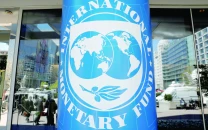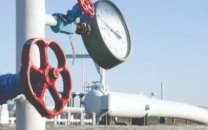Consumers pay Rs69b for idle plants
NEPRA member blames inefficiency for capacity payments to underutilised power plants

The inefficiencies in the country's electricity transmission system have burdened consumers with capacity payments of Rs69 billion in the quarterly tariff adjustment (QTA) for ex-Wapda distribution companies (DISCOs) for the third quarter of financial year 2024-25.
Three power plants had been operating at lower capacity during the period under review, but they received Rs69 billion in capacity payments, which the electricity consumers had to pay.
National Electric Power Regulatory Authority (Nepra) Member (Technical) Rafique Ahmad Shaikh has pointed out inefficiencies in the country's transmission system due to which Rs69 billion was paid to three coal-fired plants in capacity charges despite extremely low utilisation. He submitted these comments in his additional note on the QTA for the third quarter of 2024-25, in which a reduction of Rs1.55 per unit was allowed to refund Rs52.6 billion to the consumers of DSICOs and K-Electric (KE) in the bills for May, June and July 2025.
According to him, transmission constraints continue to limit the utilisation of several cost-effective power plants located in the southern region, notably Port Qasim, China Power and Lucky Electric. Despite their potential to provide affordable electricity, these plants reported extremely low utilisation factors – approximately 1% for Port Qasim, 10% for China Power and 0% for Lucky Electric – during the quarter.
Nevertheless, they claimed substantial capacity payments amounting to Rs26.95 billion, Rs30.88 billion and Rs11.26 billion, respectively. In total, around Rs69.09 billion was claimed in capacity charges despite minimal generation.
This reflects a major inefficiency in the system and underscores the urgent need to address transmission bottlenecks and improve generation dispatch practices to ensure the optimal use of the available low-cost generation resources.
It is noted that the capacity claimed by DISCOs for the third quarter of FY 2024-25 amounted to Rs362.395 billion, which was significantly lower than the reference figure of Rs459.286 billion. During the same period, electricity sales stood at 19,968 gigawatt hours (GWh) compared to reference sales of 21,846 GWh in the corresponding period.
Ordinarily, a decline in electricity sales would result in an upward adjustment in capacity charges due to the fixed-cost nature of capacity payments.
However, during this quarter, the termination of certain power purchase agreements (PPAs) and other adjustments related to the independent power producers (IPPs) operating within the system have contributed to a reduction against the projected capacity payment. Consequently, this led to a negative adjustment in the third quarter of FY 2024-25.
Although the quarterly adjustment for the third quarter decreased significantly, he said that enhanced governance and more efficient system operations could have further improved electricity sales, potentially leading to an even greater reduction in the adjustment amount. In that regard, several key observations were highlighted for consideration and focused action by the relevant stakeholders.
Genco-II (Guddu old), Genco-III (TPS Muzaffargarh) and Genco-I (Jamshoro Power Company) collectively claimed capacity payments of Rs1.237 billion during the quarter – Rs469 million, Rs350 million and Rs418 million respectively – despite generating no electricity during the period.
These plants are characterised by high generation costs and poor operational efficiency, with little-to-no likelihood of receiving dispatch orders from the system operator in the future, given the availability of abundant and more cost-effective surplus capacity in the system. Continuing capacity payments to such non-operational and inefficient assets imposes an unnecessary financial burden on both the power sector and end consumers. A targeted and strategic review is, therefore, essential to rationalise these expenditures and improve the overall sector efficiency.





















COMMENTS (1)
Comments are moderated and generally will be posted if they are on-topic and not abusive.
For more information, please see our Comments FAQ